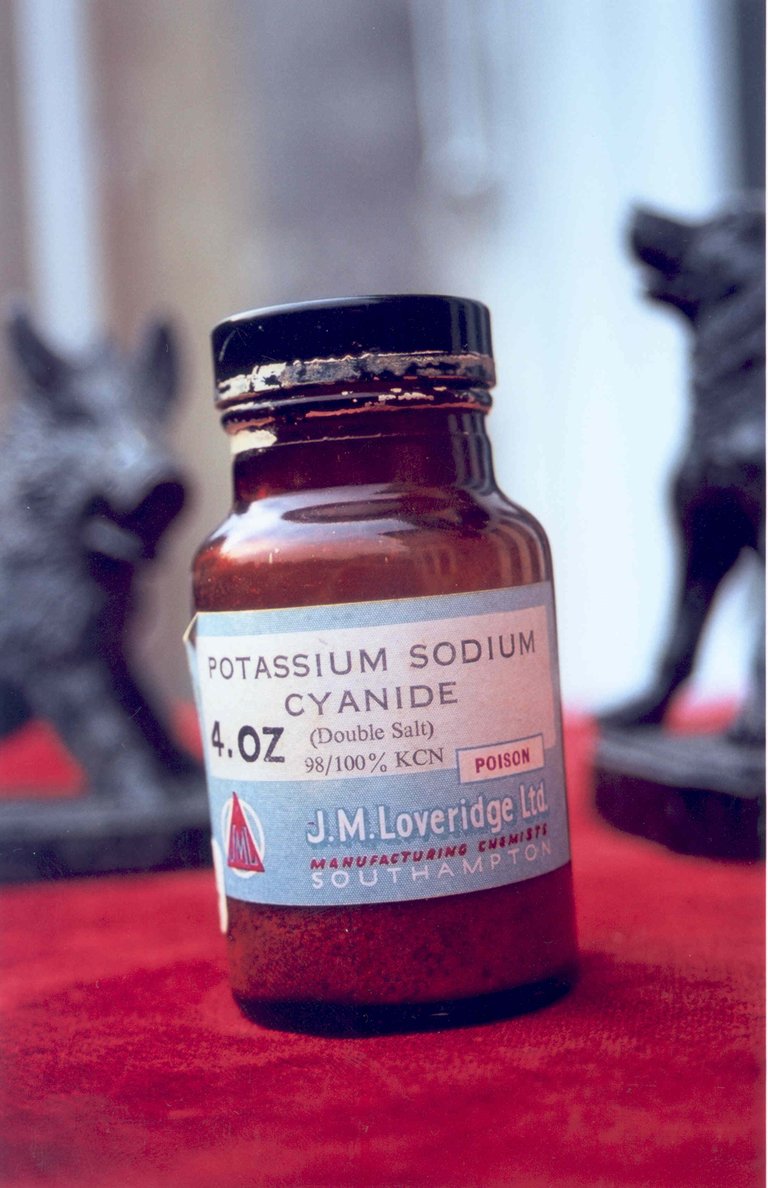Cyanide Poison- A Deadly Molecule and Its Risks
Unless you are unfamiliar with the concepts of chemistry and poisoning, you must have heard of the word "cyanide." Cyanide is a molecule composed of a Carbon atom bound to a Nitrogen atom via a triple bond. If you're still struggling to grasp its nature, let me help break it down for you.
In nature, cyanide exists as a salt, binding to alkaline metals like sodium to form Sodium Cyanide and potassium to form Potassium Cyanide. It can also bind to glycosides. In regions like Nigeria, where garri (Cassava Flake) and groundnut (Peanut) are staple foods, there have been warnings about the risk of cyanide poisoning.
Cyanide can also be found in the seeds and pits of apples, cherries, and peaches. However, cyanide poisoning typically occurs through the ingestion of cyanide salt or sugar, or by inhaling gaseous cyanide (hydrogen cyanide). Gaseous cyanide can result from the reaction between cyanide salt and acid, or from the burning of acrylonitrile plastics, which releases hydrogen cyanide.
Ingestion of cyanide can be fatal, but inhalation is even more dangerous as it enters the bloodstream faster. Historical events like executions in concentration camps during World War II and the Jonestown Massacre involved the use of cyanide.

Wikimedia Commons
Cyanide exerts its deadly effects by interfering with the production of ATP (adenosine triphosphate), a molecule responsible for supplying energy to cells. It does so by blocking the electron transport chain in the mitochondria. Specifically, cyanide binds to the cytochrome C oxidase enzyme, inhibiting electron flow and preventing ATP production. Consequently, cells are unable to generate ATP in the presence of oxygen, leading them to rely on anaerobic metabolism.
During anaerobic metabolism, lactic acid is produced as a byproduct, but it doesn't provide sufficient energy like aerobic respiration. This results in a decrease in blood pH and cellular dysfunction. Affected individuals may experience weak muscle contractions, spasms, increased heart rate, elevated breathing, and loss of balance.
As ATP depletion progresses, cells undergo programmed cell death, leading to tremors, coma, and death, often due to cardiac arrest or asphyxiation. The lethal dose of cyanide for a 70kg male is approximately 240mg. However, those who ingest non-fatal doses of cyanide can be treated with antidotes such as Amyl nitrate, Sodium Nitrate, and Sodium thiosulfate. These antidotes oxidize hemoglobin in red blood cells, changing the iron atom from Fe2+ to Fe3+, which in turn attracts cyanide ions, removing them from the COX enzyme and allowing ATP production to resume.
Despite the presence of cyanide in certain fruits, such as cassava, lima beans, and almonds, most people don't die from consuming these foods. This is because the amount of cyanide in these products is typically not enough to be fatal. Natural sources of cyanide usually pose a minimal risk when consumed in moderation.
Cyanide is a deadly molecule that interferes with the production of ATP, and this can lead to severe health consequences. However, the risk of cyanide poisoning from the consumption of certain fruits or their products is low, provided they are eaten in reasonable quantities.
Reference
https://www.ncbi.nlm.nih.gov/pmc/articles/PMC3877494/
https://www.ncbi.nlm.nih.gov/pmc/articles/PMC6441064/
https://www.ncbi.nlm.nih.gov/books/NBK507796/
https://emedicine.medscape.com/article/814287-overview
https://sjtrem.biomedcentral.com/articles/10.1186/1757-7241-19-14

Thanks for your contribution to the STEMsocial community. Feel free to join us on discord to get to know the rest of us!
Please consider delegating to the @stemsocial account (85% of the curation rewards are returned).
Thanks for including @stemsocial as a beneficiary, which gives you stronger support.